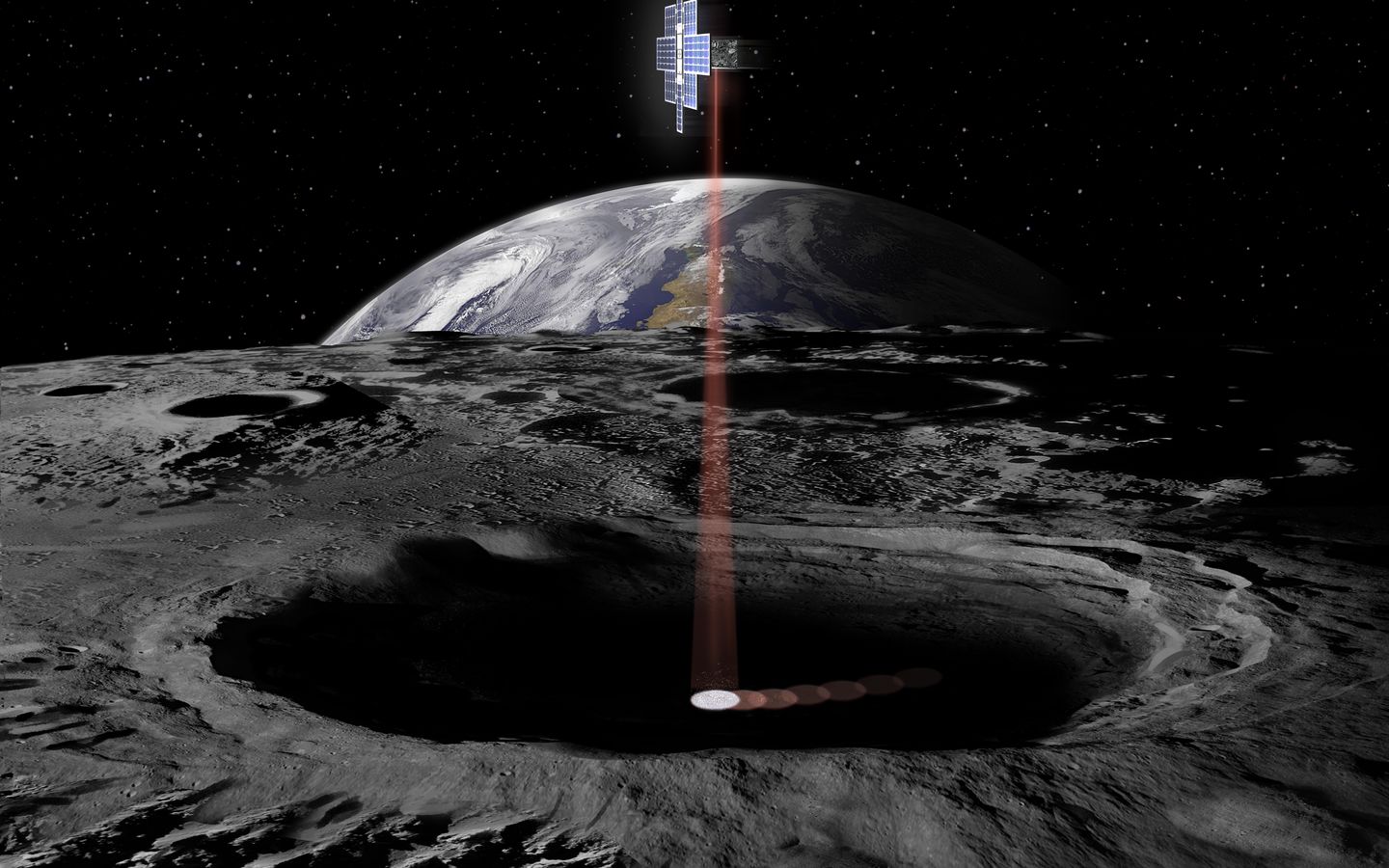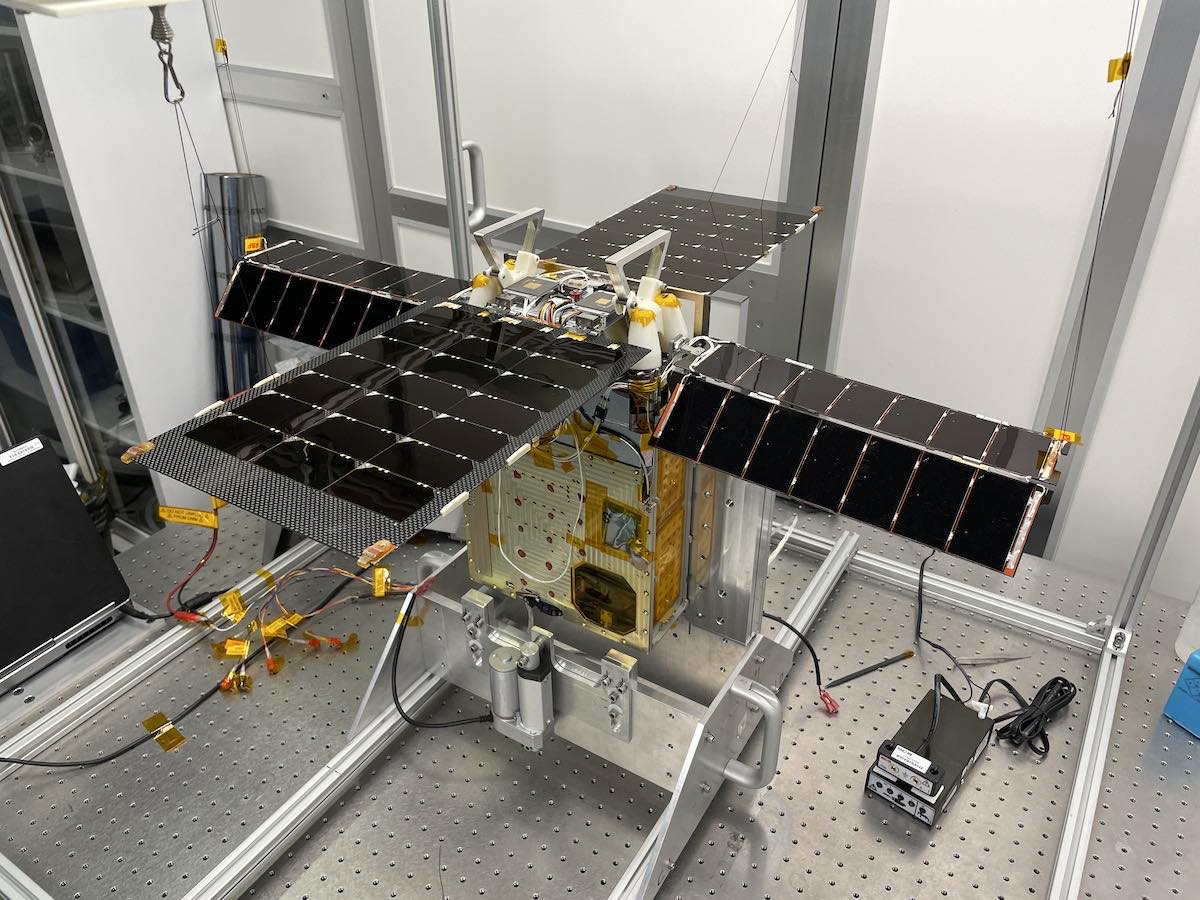
NASA’s Lunar Flashlight spacecraft, a small briefcase-size CubeSat that could break new ground in the search for water ice on the moon, is hitching a ride to space on a SpaceX Falcon 9 rocket along with the privately-developed Hakuto-R moon lander after missing a launch opportunity on NASA’s Artemis 1 mission.
The 31-pound (14-kilogram) CubeSat will deploy from the Falcon 9 rocket about seven minutes after the Hakuto-R moon lander developed by the Japanese company ispace, then use its own compact propulsion system to maneuver into an oval-shaped near rectilinear halo orbit that skims just 9 miles (15 kilometers) from the moon’s south pole at its closest approach.
It will take about four months for Lunar Flashlight to reach its science orbit, after flying a fuel-efficient, low-energy transfer taking it well beyond the moon before lunar gravity helps capture the spacecraft into orbit early next year.
The Lunar Flashlight mission, led by NASA’s Jet Propulsion Laboratory, is designed to orbit the moon and shine infrared lasers into permanently shadowed craters near the lunar poles. An instrument on Lunar Flashlight will measure the light reflected off the lunar surface, revealing the composition and quantity of water ice and other molecules hidden on dark crater floors.
“It is ambitious for a tiny spacecraft,” said Barbara Cohen, Lunar Flashlight’s principal investigator from NASA’s Goddard Space Flight Center. “What we are doing is we are using four infrared lasers in different infrared wavelengths to search for definitive markers of water ice. We use the laser to shine onto the surface of the moon. At certain wavelengths, ice will absorb those wavelengths but rock or regolith will reflect them.”
Scientists will be able to determine the presence of water ice, and hints about how much there is, based on how much of the laser light bounces off the permanently dark floors of the polar craters. Other missions use reflected sunlight to search for signs of water.
“If you don’t have the sun shining in permanently shadowed craters, you have to bring your own illumination, and that’s what Lunar Flashlight is doing,” Cohen said.
Other missions have found evidence of subsurface ice, and hints of water ice deposits at the surface on the crater floors. Lunar Flashlight will try to confirm the presence of ice at the surface. Surface ice deposits could be accessed by future astronauts to help create drinking water and rocket propellant.
Lunar Flashlight was previously assigned to launch on the first flight of NASA’s huge Space Launch System moon rocket. NASA selected 13 CubeSat missions, including Lunar Flashlight, to ride on the first SLS flight, known as Artemis 1.

Lunar Flashlight was one of the three CubeSat missions that weren’t ready in time to be integrated onto the SLS moon rocket before it was closed out for the Artemis 1 test launch.
A NASA spokesperson said last year that issues with the original propulsion system for the Lunar Flashlight spacecraft forced managers to switch to an alternative design. That slowed development of the mission, and coupled with effects from the COVID-19 pandemic, prevented the spacecraft from being ready for integration with the Artemis 1 rocket.
The two other CubeSat projects that missed the deadline for the Artemis 1 were the Cislunar Explorers mission, consisting of a pair of CubeSats from Cornell University, and the CU-E3 mission from the University of Colorado, Boulder.
As of this summer, either had secured a new launch opportunity.
After missing its ride on Artemis 1, Lunar Flashlight was assigned to launch on a SpaceX rocket with a commercial moon lander owned by Houston-based Intuitive Machines. That launch has been delayed to 2023 due to delays in developing Intuitive Machines’ lander, so NASA was able to switch Lunar Flashlight to the Hakuto-R mission.
Cohen said Lunar Flashlight ended up in a better situation than if it had launched on Artemis 1. Some of the CubeSat rideshare payloads on the Artemis 1 moon rocket could not recharge their batteries from the time they were integrated on the launcher in 2021 until the launch a year later.
“We are in a little bit better situation because we are fully charged, and we didn’t have to sit on the pad for a year,” Cohen said.
Email the author.
Follow Stephen Clark on Twitter: @StephenClark1.
from Spaceflight Now https://ift.tt/xDEa9i1
via World Space Info







0 comments:
Post a Comment